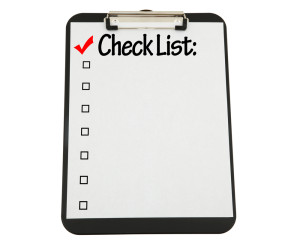Developing a Maintenance Schedule for your Church
November 20, 2012 - 4 minutes read The importance of keeping your church a safe place to work in or visit cannot be overstated. The responsibility for complying with safety regulations rests with church building owners and occupiers, which may include trustees, board members, church leaders and executives, and the RMO (Risk Management Officer).
The importance of keeping your church a safe place to work in or visit cannot be overstated. The responsibility for complying with safety regulations rests with church building owners and occupiers, which may include trustees, board members, church leaders and executives, and the RMO (Risk Management Officer).
As well as the checklists provided by RedBook for essential safety measures, you may want to consider developing your own maintenance schedule to help you achieve the aim of improving general safety, while reducing the risk of insurance claims in the process. A suggested itinerary for maintenance is below (which includes some essential safety measures).
Day-to-day:
- Do a quick visual check of the grounds and building for hazards when first entering the premises.
- When exiting the building, ensure that electrical equipment is turned off or unplugged if required, no candles are left burning, any hazards are removed and lights are turned off. If you have a security alarm, make sure it is enabled.
Weekly:
- Run a check of exit doors to ensure they are not obstructed in any way.
- Test fire alarms to ensure they are working correctly.
Monthly:
- Check outside areas for hazards to cars and pedestrians, cracks or potholes in the car-park and uneven surfaces on walking paths.
- Conduct a quick inspection on fire safety equipment to ensure it is in place and that the pressure gauges indicate that extinguishers are full.
- Make sure roofs and gutters are clear of debris build-up.
Quarterly (three-monthly):
- Check that all exit doors open easily and have no obstructions.
- Make sure all internal paths to exits are clear and not obstructed in any way.
Six-monthly:
- Fire safety equipment should be tested by qualified personnel to Australian Standard AS1851. Maintenance tags should be provided and attached to equipment.
- Exit signs should be tested to AS2293.2. Any batteries to be replaced must be installed by a qualified electrician.
- Emergency lighting – as for exit signs above.
- Ensure self-closing doors and automatic fire-doors are in working order and have these serviced if necessary.
- Have automatic fire-detection systems tested by qualified personnel.
- Schedule a professional service for any lifts in the building.
Yearly:
- Electrical equipment testing should be undertaken to Standard AS/NZ 3760-2010.
- Have heating systems professionally serviced.
- Check fencing and outdoor seating for wood rot, and have trees pruned and trimmed as required.
- Do a review of your church’s risk assessment and management program.
Health and Safety regulations state that essential safety measures should be recorded and a hard-copy kept for inspections and audits. More information on this and on inspection procedures can be found in your Redbook manual.
For more information on fire-safety see our articles on fire-safety tips and fire extinguishers. To train your personnel in risk management and use of fire equipment, see the induction courses on our Training page. For information on the Churches of Christ ‘RedBook’ risk management system, see our separate article here.
Written by Tess Oliver
Tags: fire, health & safety, redbook, risk management
Recent Comments